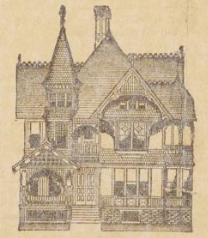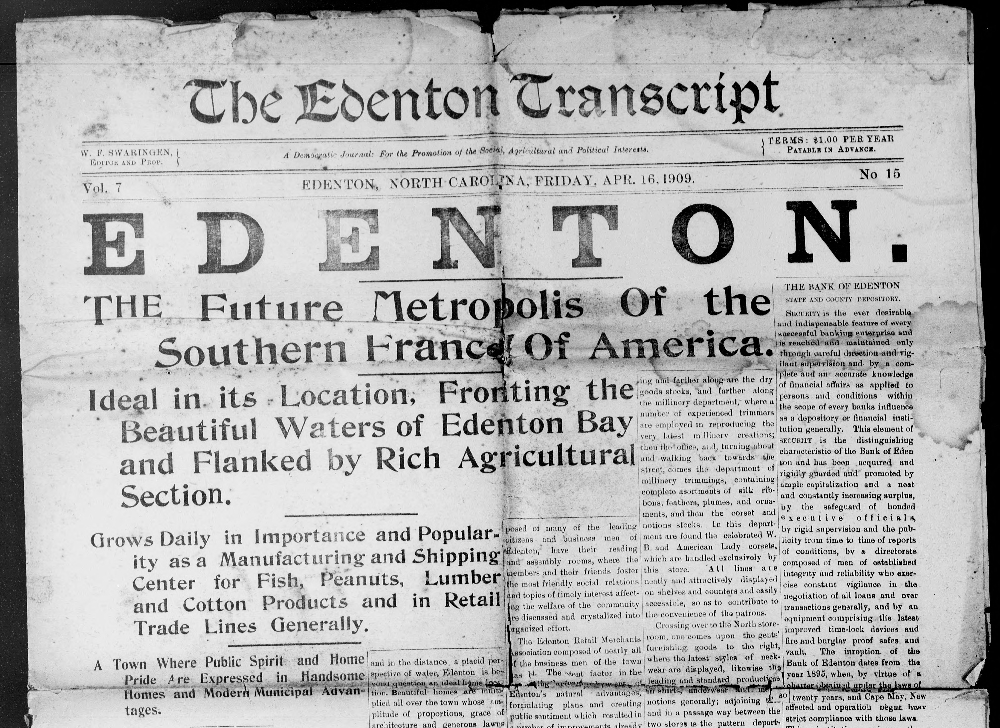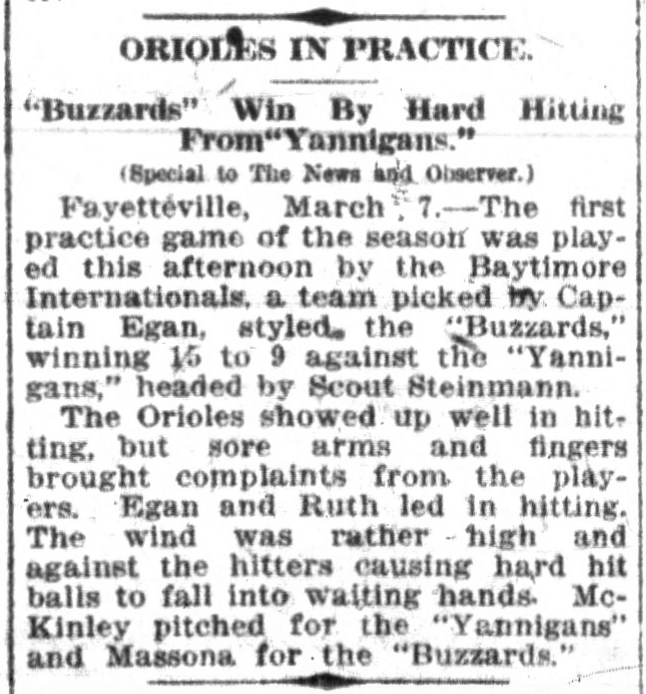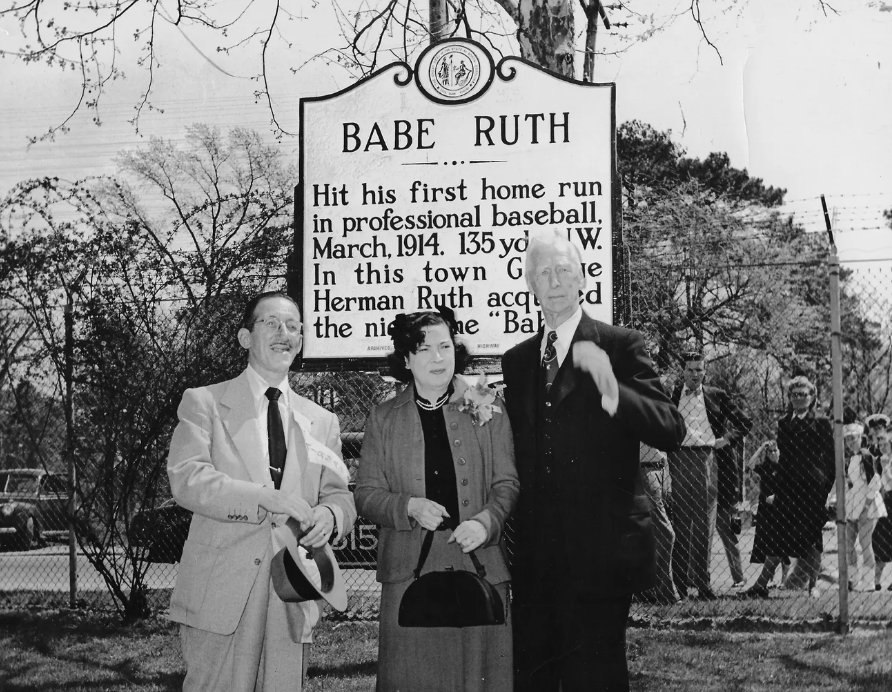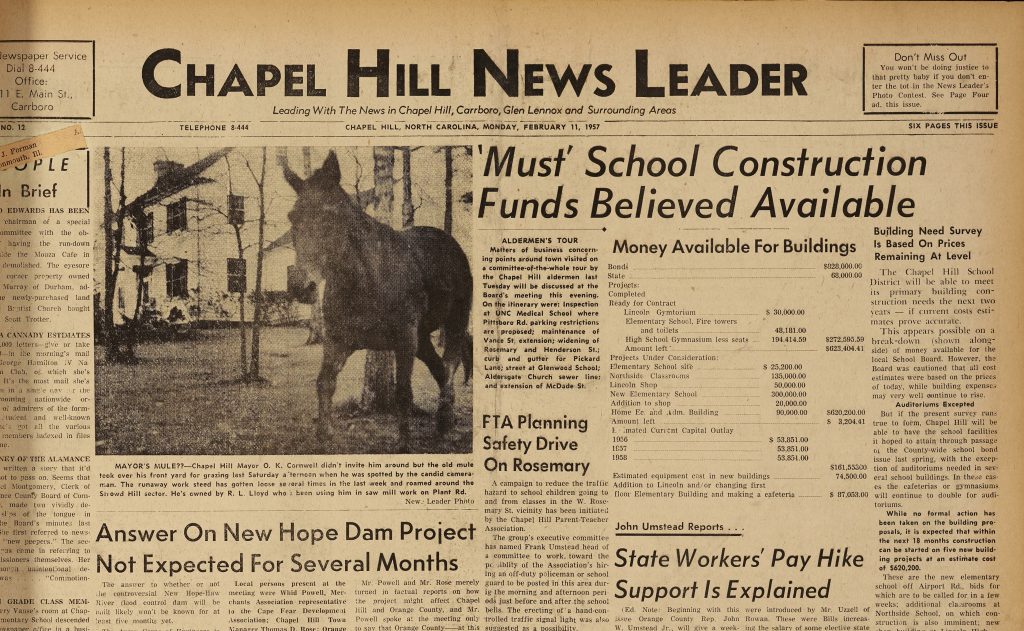New issues from thirteen newspaper titles have been added to DigitalNC, thanks to The North Carolina Collection at UNC Chapel Hill. These date from the late 19th century and fill in gaps in our digital newspaper collections. Issues from Our Home, The Daily Record, The Morning Herald, and The Western Herald are the first of these titles on the site.
Below is a list of titles, their cities of publication, and the years from which the issues date.
- Henderson Gold Leaf (Henderson, N.C.) – May 25, 1899
- The Wilmington Messenger (Wilmington, N.C.) – Nov. 18, 1898
- The Home Rule (Raleigh, N.C.) – Oct. 20, 1898
- The Western Herald (Jefferson, N.C.) – June 20, 1899
- The Morning Herald (Durham, N.C.) – Feb. 6, 1898, Sept. 18, 1898, Oct. 2, 1898, and Feb. 12, 1899
- The Lincoln Journal (Lincolnton, N.C.) – Aug. 26, 1898
- The Milton Herald (Milton, N.C.) – Feb. 3, 1898
- The Daily Record (Greensboro, N.C.) – Feb. 15, 1898, May 4, 1898, and June 8, 1898
- Salisbury Daily Sun (Salisbury, N.C.) – Aug. 10, 1898 and Dec. 28, 1899
- Our Home (Marshville, N.C.) – Aug. 16, 1898
- The Raleigh Times (Raleigh, N.C.) – May 26, 1898
- Winston-Salem Journal (Winston-Salem, N.C.) – May 25, 1898
- King’s Weekly (Greenville, N.C.) – March 24, 1899
Search or browse all of our newspapers here.

This week we have another 30 newspaper titles up on DigitalNC! In the September 3, 1891 issue of Boone’s Watauga Democrat we have an article describing the terrible train wreck of Bostian’s Bridge in Statesville. This fatal accident sparked a legendary North Carolina ghost story, but perhaps even scarier are the boogeymen railroad companies would often create to avoid accountability: train wreckers.
-

-
Watauga Democrat, September 3, 1891
-
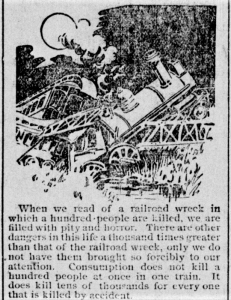
-
News and Observer, July 7, 1898
By 1891 the railroad system in America had exploded, allowing for easier cross-country travel and bringing with it fresh new paranoia about disasters and scary strangers coming to your town. Blaming a wreck on some shady character was a lot easier than paying a fortune on settlements due to negligence. Almost immediately after the August 27, 1891 accident, the Richmond & Danville Railroad Company put out ads offering a $10,000 reward for the apprehension of the perpetrator, leading to many being accused and arrested (conveniently with the help of a railroad detective).
-
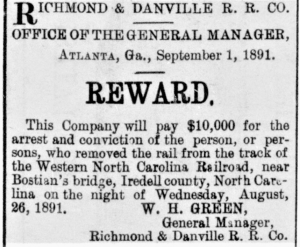
-
News & Observer, September 4, 1891
-
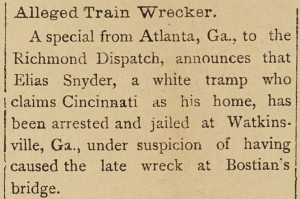
-
Greensboro Workman, September 16, 1891
-
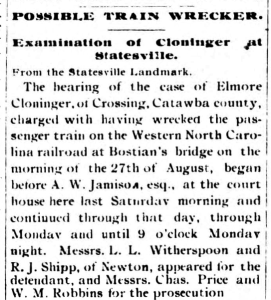
-
Asheville Citizen, October 15, 1891
-
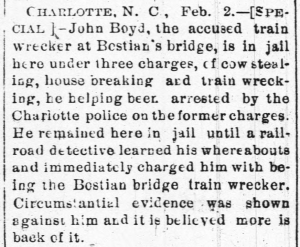
-
Wilmington Messenger, February 3, 1892
-
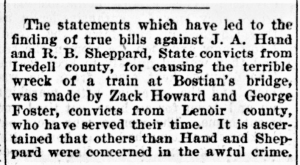
-
News & Observer, August 29, 1897
-
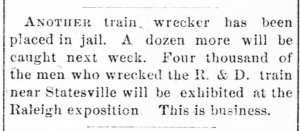
-
Durham Daily Globe, September 26, 1891
The editor at Statesville’s Landmark provides us with an incredibly detailed account of the accident and the recovery effort, complete with interviews from survivors and witnesses where they describe rotten cross-ties and rail workers throwing this evidence into the creek below the bridge. Many of those interviewed make a point to mention that there were no signs of robbery after the crash, which doesn’t exactly support the idea of this being some dastardly deed by a bandit.
Over the next year, we’ll be adding millions of newspaper images to DigitalNC. These images were originally digitized a number of years ago in a partnership with Newspapers.com. That project focused on scanning microfilmed papers published before 1923 held by the North Carolina Collection in Wilson Special Collections Library. While you can currently search all of those pre-1923 issues on Newspapers.com, over the next year we will also make them available in our newspaper database as well. This will allow you to search that content alongside the 2 million pages already on our site – all completely open access and free to use.
This week’s additions include:
Asheville
Boone
Burlington
Chapel Hill
Durham
Fayetteville
Fairfield
Gastonia
Holly Springs
Jackson
Kinston
Lexington
Lincolnton
Pittsboro
Raleigh
Salisbury
Tarboro
Winston
If you want to see all of the newspapers we have available on DigitalNC, you can find them here. Thanks to UNC-Chapel Hill Libraries for permission to and support for adding all of this content as well as the content to come. We also thank the North Caroliniana Society for providing funding to support staff working on this project.

You may be surprised to learn what was worrying the citizens of Chapel Hill and Carrboro in 1958. Our most recent additions from the Chapel Hill News Leader, supplied by our partner, the Chapel Hill Historical Society, touch on everything from the University of North Carolina at Chapel Hill, civil rights, alcohol laws, and policing to some new technologies arriving the city.
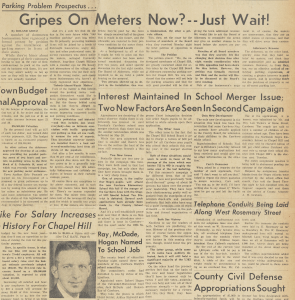
July 31, 1958
One of the first big stories breaks about midway through the year: the parking meter debacle. Apparently, the Chapel Hill Board of Aldermen had been tossing around the idea of installing parking meters for a couple of years, and the decision to finally do it happened in 1958. Local businessmen immediately pushed back, arguing that instituting paid parking would hurt their businesses.
Apparently, everyone could agree on the fact that the parking meters were ugly, but the author of the article, Roland Giduz, speculated that complaints about the meters would die down once everyone realized how much they improve traffic (spoiler alert: that doesn’t really happen based on the coverage that follows).
Just below the meter gripes article is another big story of the year: school integration. It describes two issues for an upcoming school merger election: first, whether Black students would attend Carrboro Elementary School, and second, whether the Chapel Hill School Board would charge $30 tuition for students from Carrboro. (Note: more materials about Carrboro Elementary School were also uploaded in this batch, including architectural plans and a document of education specifications).
The earlier articles that this one refers to (from May 22, 1958) don’t mention race until the very last line: “As to the general pupil assignment policy for next year, [Mr. Culbreth] said that he anticipated that the Board would re-adopt the existing regulations, whereby racial segregation has been maintained.” As the July article notes, this is four years after the Brown v. Board Supreme Court decision declaring racial segregation in public schools unconstitutional.
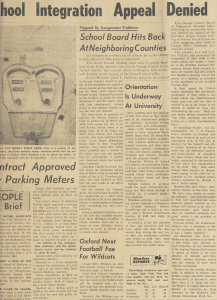
September 11, 1958
The issue gets a more personal focus in the September 11, 1958 issue, when the Orange County School Board denied Lee and Lattice Vickers’ child admittance to the then all-white Carrboro Elementary School. The Vickers’ case was set against the backdrop of ongoing school assignment problems, with neighboring school systems fighting each other over pupil placement and resources.
The fight to racially integrate schools in Chapel Hill (and throughout North Carolina) continued well into the 1960s, and, sadly, none of the community papers that we have from the area extend past 1963. One of the latest articles available, from The Chapel Hill Weekly, reports a survey of Southern business leaders and how their perspective on industry shaped their views on the matter.
But, in 1958, public school integration was still competing for front page space with—you guessed it—parking meters.
Another major debate in the community during this time was over the sale of alcohol. North Carolina was ahead of the curve of prohibition, outlawing the sale and manufacture of alcohol in 1909 (a decade before the national amendment). And, even after the repeal of prohibition in 1933, the Alcoholic Beverage Control system wasn’t created until 1937. (Graham County remained a “dry” county until just recently). In 1958, there was still a lot of resistance to the ABC setting up shop.

November 17, 1958
In this case, efforts were headed by a citizens group concerned about the effects of the ABC stores in the area. Meetings were held at the University Baptist Church, though Carolyn Noell, a spokesperson for the group, noted that local churches were only providing contacts and spaces (not serving as official sponsors).
Not long before this, the News Leader reprinted an article from the Durham Morning Herald about how lucrative the ABC stores were. Apparently, the Durham ABC stores sold almost $58 million of alcohol from June 30, 1957, to September 1958 (enough to pay for Durham’s entire share of the Raleigh-Durham airport, plus some for Lincoln Hospital, local schools, warehouse equipment, public libraries, garbage disposal services, and a rabies inspection program, among other things). To put these sales into proportion, a fifth of whiskey (from a “popular brand”) cost $3.95 back then. Certainly, money was at the heart of the argument for the Orange County Citizens for Legal Control in their ad in the January 29, 1959 issue.
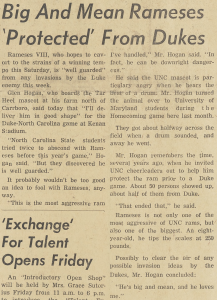 Of course, in a college town like Chapel Hill, there’s also frequent news about the University. One article, from October 2, 1958, warned that student enrollment may swell to between 12,000 and 14,000 in 1970 (today, total enrollment exceeds 30,000). And—surprise!—much of the concern about the growing student population is related to parking.
Of course, in a college town like Chapel Hill, there’s also frequent news about the University. One article, from October 2, 1958, warned that student enrollment may swell to between 12,000 and 14,000 in 1970 (today, total enrollment exceeds 30,000). And—surprise!—much of the concern about the growing student population is related to parking.
One of the funnier articles about UNC-CH is about Rameses, the live mascot (not to be confused with costumed cheerleader Rameses, former bodybuilder). Rameses VIII, then in power, was “the most aggressive ram I’ve handled,” according to Glen Hogan, his boarder. He was also one of the biggest up until then, clocking in at 250 pounds. These two facts, Hogan hoped, would dissuade rival Duke students from stealing the mascot.
The reigning Rameses (né Otis) ascended in 2020 as the twenty-second mascot. His handler, James Hogan, is part of the same family that has been caring for the mascots since the 1920s. Rameses XXII has “come a long way” in getting used to people and is (presumably) a bit sweeter than his “big and mean” predecessor—though he is still well-guarded.
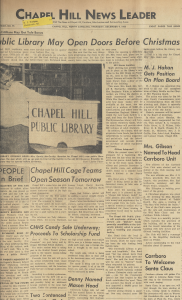
December 4, 1958
One final story from 1958 is the opening of the Chapel Hill Public Library, which was originally opened in the Hill House on West Franklin Street. The goal, according to Mrs. Richmond Bond, chairman of the board, was to “supplement” the University’s library by focusing on children’s and popular books that were generally unavailable at UNC.
Bond argued that Chapel Hill was the only town of its size in North Carolina without a public library and that the University library had “almost more than it can do” with the increase of UNC students. This led the Board of Aldermen to approve a $4,600 grant for the local library. Somebody even donated over 300 books before the library opened its doors.
In the very last uploaded issue of the Chapel Hill News Leader, from January 29, 1959, the top headline reads, “Death of a Newspaper.” Due to internal litigation, the paper had to stop running.
You can see all of our issues of the Chapel Hill News Leader here and more materials from the Chapel Hill Historical Society on their partner page. You can also visit their website for more information.

This week we have another 40 titles up on DigitalNC! In this batch we have special editions of Morganton’s The News-Herald that detail the destruction caused to Western North Carolina by “The Great Flood of 1916.”
In July of 1916, two hurricanes hit Western Carolina within a week of each other. The first one came from the Gulf Coast and stalled over the region from the 8th until the 10th, and the second made landfall in South Carolina, reached the mountains on the 15th, and dumped an astounding 22 inches of rain in a 24 hour period.
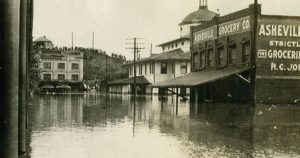
Asheville Grocery, 1916. Image via ourstate.com
After the storms had passed, the Swannanoa River was a mile wide, the French Broad was four times its normal width, there were over 300 landslides, and the town of Hendersonville was surrounded by a lake. At least 80 people died in the flooding, but since so many people lived in rural areas, the exact number is unknown.
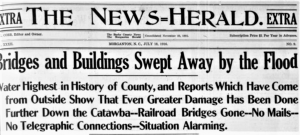
July 18, 1916
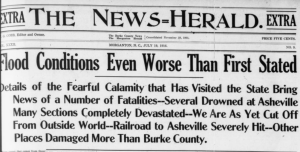
July 19, 1916
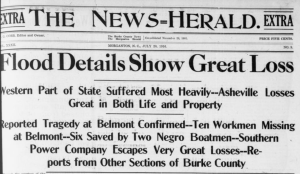
July 20, 1916
Over the next year, we’ll be adding millions of newspaper images to DigitalNC. These images were originally digitized a number of years ago in a partnership with Newspapers.com. That project focused on scanning microfilmed papers published before 1923 held by the North Carolina Collection in Wilson Special Collections Library. While you can currently search all of those pre-1923 issues on Newspapers.com, over the next year we will also make them available in our newspaper database as well. This will allow you to search that content alongside the 2 million pages already on our site – all completely open access and free to use.
This week’s additions include:
- The Liberty Register (Liberty, N.C.) – 1899-1900
- The Kernersville News (Kernersville, N.C.) – 1883-1888
- Jonesboro Leader (Jonesboro, N.C.) – 1888-1892
- Daily Progress (New Bern, N.C.) – 1860
- The Graphic (Nashville, N.C.) – 1899-1925
- The Constitution (Lincolnton, N.C.) – 1880
- The Union Labor Record (Wilmington, N.C.) – 1922-1937
- The Cottage Visitor (Hendersonville, N.C.) – 1869
- Carolina Observer (Fayetteville, N.C.) – 1831-1832
- The Second Century (Albemarle, N.C.) – 1881
- The News-Herald (Morganton, N.C.) – 1902-1922
- The Greenville Index (Greenville, N.C.) – 1894
- Goldsboro Weekly Argus (Goldsboro, N.C.) – 1914-1915
- The Albemarle Enquirer (Murfreesboro, N.C.) – 1886
- Murfreesboro Index (Murfreesboro, N.C.) – 1887-1896
- Piedmont Press (Hickory, N.C.) – 1873-1887
- The Hickory Press (Hickory, N.C.) – 1897-1900
- Randolph Regulator (Asheboro, N.C.) – 1876-1879
- The Randolph Sun (Asheboro, N.C.) – 1878
- North Carolina Bulletin (Asheboro, N.C.) – 1856-1857
- The New North State (Greensboro, N.C.) – 1871-1877
- Greensboro North State (Greensboro, N.C.) – 1886-1891
- The Daily Workman (Greensboro, N.C.) – 1885-1889
- Greensboro Telegram (Greensboro, N.C.) – 1910-1911
- The Weekly Index (Henderson, N.C.) – 1868-1869
- The Henderson Index (Henderson, N.C.) – 1870
- The Hustler (Henderson, N.C.) – 1899
- Evening Herald (Henderson, N.C.) – 1900
- The Henderson News (Henderson, N.C.) – 1887-1888
- The Vance Farmer (Henderson, N.C.) – 1892
- Henderson Daily Dispatch (Henderson, N.C.) – 1916-1923
- Albemarle Sentinel (Edenton, N.C.) – 1839-1840
- Carolina Miscellany (Edenton, N.C.) – 1832
- North-Carolina Miscellany (Edenton, N.C.) – 1833
- The Edenton Clarion (Edenton, N.C.) – 1880-1881
- Edenton Sentinel, and Albemarle Intelligencer (Edenton, N.C.) – 1841
- Albemarle Bulletin (Edenton, N.C.) – 1850-1851
- American Banner (Edenton, N.C.) – 1856
- The Express (Edenton, N.C.) – 1859
- Eastern Courier (Edenton, N.C.) – 1900
If you want to see all of the newspapers we have available on DigitalNC, you can find them here. Thanks to UNC-Chapel Hill Libraries for permission to and support for adding all of this content as well as the content to come. We also thank the North Caroliniana Society for providing funding to support staff working on this project.

Another 32 newspaper titles are up on DigitalNC this week! Three of these titles are from North Carolina towns that either changed their names or just don’t exist anymore.
First, we have the North Carolina National from Company Shops, North Carolina. Company Shops was a community formed around the railroad car construction and maintenance industry in Alamance County, between Graham and Gibsonville. Due to growing anti-railroad sentiments, the community of Company Shops decided to appoint a committee to change the name of the town in 1887. This committee decided on the name ‘Burlington.’
Next up is Our Home from Beaver Dam, North Carolina. It’s hard to determine exactly where Beaver Dam would have been, but knowing that the paper is from Union County, it seems possible that it was located near Beaverdam Creek, just south of Wingate and Marshville, North Carolina.
Lastly, we have The Hokeville Express from what was once known as Hokeville, or ‘Lincoln Factory,’ North Carolina. It seems likely that the community was named after the affluent Hoke family of Lincolnton. Col. John Hoke was one of the owners of the profitable Lincoln Cotton Mills. Col. Hoke died in 1845 and passed ownership on to his son, also named John Hoke. The factory burned down in 1862, and the following year the Confederate Army began constructing a laboratory on the site to manufacture medicines, such as ether, chloroform, and opiates. Since then the community has gone by the name ‘Laboratory.’
Over the next year, we’ll be adding millions of newspaper images to DigitalNC. These images were originally digitized a number of years ago in a partnership with Newspapers.com. That project focused on scanning microfilmed papers published before 1923 held by the North Carolina Collection in Wilson Special Collections Library. While you can currently search all of those pre-1923 issues on Newspapers.com, over the next year we will also make them available in our newspaper database as well. This will allow you to search that content alongside the 2 million pages already on our site – all completely open access and free to use.
This week’s additions include:
- The Daily Standard (Concord, N.C.) – 1893-1895
- Daily Concord Standard (Concord, N.C.) – 1895-1902
- Southern Voice (Bethel, N.C.) – 1890
- Berea Gazette (Berea, N.C.) – 1877-1878
- North Carolina National (Company Shops, N.C.) – 1882
- The Alliance Weekly (Hillsborough, N.C.) – 1896
- Hillsborough Plaindealer (Hillsborough, N.C.) – 1861
- North Carolina Democrat (Hillsborough, N.C.) – 1849-1850
- The Naked Truth (High Point, N.C.) – 1896
- Farm and Fireside (High Point, N.C.) – 1883
- High Point Reporter (High Point, N.C.) – 1860
- Our Home (Beaver Dam, N.C.) – 1893
- The Progressive Reformer (Kings Mountain, N.C.) – 1896
- The Ashe Reporter (Jefferson, N.C.) – 1892
- The Southern Home (Kernersville, N.C.) – 1887
- The Hokeville Express (Hokeville, N.C.) – 1855
- Gazette (Kinston, N.C.) – 1873
- The Mountaineer (Morganton, N.C.) – 1883
- The Carolina Mountaineer (Morganton, N.C.) – 1883-1884
- The Anglo-Saxon (Rockingham, N.C.) – 1902-1908
- The Ansonian (Polkton, N.C.) – 1874-1876
- Jonesville Enterprise (Jonesville, N.C.) – 1858
- The Rubicon (Yanceyville, N.C.) – 1840
- The Concord Daily Tribune (Concord, N.C.) – 1910-1918
- The Burlington News (Burlington, N.C.) – 1900
- New Berne Weekly Journal (New Bern, N.C.) – 1908-1910
- The Anson Times (Wadesboro, N.C.) – 1881-1886
- The Moore County News (Carthage, N.C.) – 1920-1922
- The Canton Enterprise (Canton, N.C.) – 1920-1942
- The Chatham Record (Pittsboro, N.C.) – 1904-1922
- The Times (Concord, N.C.) – 1885-1894
- The Concord Times (Concord, N.C.) – 1894-1922
If you want to see all of the newspapers we have available on DigitalNC, you can find them here. Thanks to UNC-Chapel Hill Libraries for permission to and support for adding all of this content as well as the content to come. We also thank the North Caroliniana Society for providing funding to support staff working on this project.

This week we have added issues from 35 different newspaper titles! One of the titles we have is a paper from the now non-existent town of Buffalo Springs, North Carolina. According to this News & Record article, the Harnett County town ceased to exist when the turpentine industry in the area died out. But the intriguing thing about these papers isn’t the ghost of this town, it’s the man who wrote them: John McLean Harrington. Professor and author Michael Ray Smith penned this fascinating paper about Harrington and his newspapers, in which he writes: “Shortly before the Civil War, the son of an affluent Southern family began a journalism career unlike any in his community, his state, or even the nation and produced 305 handwritten newspapers, perhaps the greatest single output of handwritten newspapers by any American journalist.” Harrington had a subscription list of roughly 100 people and would painstakingly copy each individual paper by hand, even though printing presses were widely available at the time. In 1858, when Harrington was writing issues of The Nation, he was only 19 years old. The young man’s ambitions didn’t stop with just being a journalist. He also apparently worked as a bookkeeper, surveyor, educator, sheriff, and postmaster in Harnett County. While his accomplishments were quite impressive, he was also a man of contradiction. Smith writes this of the rural Renaissance man: “He talked of a partner but never revealed the colleague’s identity—if he indeed had one. He discussed the evil of drinking but died an alcoholic. He served as a member of the Confederate militia only to swear an oath that he would always remain a loyal Unionist. Perhaps Harrington tended to do or say whatever was expedient or expected at the time. Maybe he was himself just conflicted in numerous ways.”
Over the next year, we’ll be adding millions of newspaper images to DigitalNC. These images were originally digitized a number of years ago in a partnership with Newspapers.com. That project focused on scanning microfilmed papers published before 1923 held by the North Carolina Collection in Wilson Special Collections Library. While you can currently search all of those pre-1923 issues on Newspapers.com, over the next year we will also make them available in our newspaper database as well. This will allow you to search that content alongside the 2 million pages already on our site – all completely open access and free to use.
This week’s additions include:
- The Tri-Weekly Bulletin (Charlotte, N.C.) – 1865-1881
- Asheville Pioneer (Asheville, N.C.) – 1867-1869
- Weekly Pioneer (Asheville, N.C.) – 1870-1874
- The Carolina Eagle (Hickory, N.C.) – 1871-1872
- Mountain Messenger (Jefferson, N.C.) – 1873
- Battleboro Advance (Rocky Mount, N.C.) – 1871-1873
- The Weekly Ansonian (Polkton, N.C.) – 1876-1877
- The Southern Mail (Hillsborough, N.C.) – 1880
- The Carolina Republican (Lincolnton, N.C.) – 1848-1853
- Yadkin & Catawba Journal (Salisbury, N.C.) – 1828-1833
- The Journal (Salisbury, N.C.) – 1833-1834
- The Hornet (Bixby, N.C.) – 1908
- The Courier (Asheboro, N.C.) – 1922-1924
- The Asheville Democrat (Asheville, N.C.) – 1889-1891
- Monthly Gleaner (Asheville, N.C.) – 1894-1895
- Fuller’s Gleaner (Asheville, N.C.) – 1895-1896
- The Dispatch (Bessemer City, N.C.) – 1912
- The Carthage Blade (Carthage, N.C.) – 1887-1895
- The Central Times (Dunn, N.C.) – 1895
- County Union (Dunn, N.C.) – 1895-1899
- The Transylvania Hustler (Brevard, N.C.) – 1893
- The Brevard Hustler (Brevard, N.C.) – 1896
- The Western Carolina Democrat (Bakersville, N.C.) – 1888
- Roan Mountain Republican (Bakersville, N.C.) – 1876-1879
- The Nation (Buffalo Springs, N.C.) – 1858
- Cape Fear News (Fayetteville, N.C.) – 1915-1917
- Central Argus (Hamlet, N.C.) – 1880
- The Stanly Enterprise (Albemarle, N.C.) – 1903-1907
- The Albemarle Enterprise (Albemarle, N.C.) – 1912-1916
- The Stanly News-Herald (Albemarle, N.C.) – 1920-1922
- The Beaufort News (Beaufort, N.C.) – 1920-1922
- The State Dispatch (Burlington, N.C.) – 1908-1909
- Daily Carolina Times (Charlotte, N.C.) – 1864-1869
- The Standard (Concord, N.C.) – 1900-1902
- The Battleboro Progress (Battleboro, N.C.) – 1880
If you want to see all of the newspapers we have available on DigitalNC, you can find them here. Thanks to UNC-Chapel Hill Libraries for permission to and support for adding all of this content as well as the content to come. We also thank the North Caroliniana Society for providing funding to support staff working on this project.

